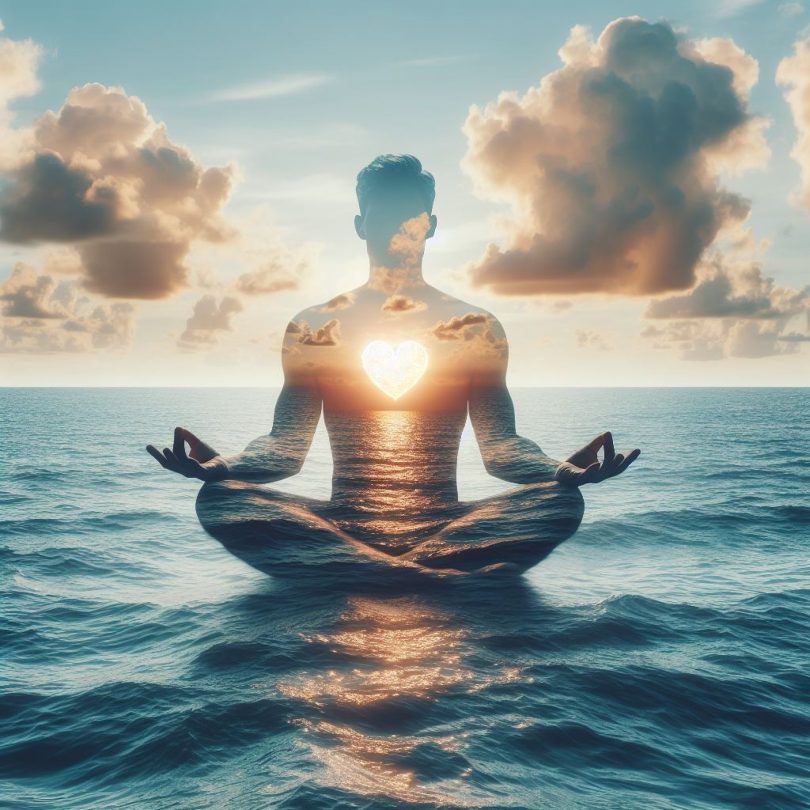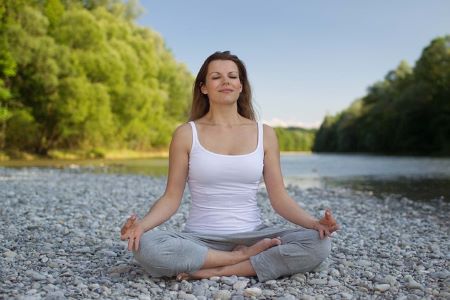During my yoga teacher training in India, our yoga master focused on the importance of breathwork at the start of each day and at the start of any yoga asana practice. The benefits were obvious. Controlled breathing tapped into my nervous system, helped clear my mind, energised me and relaxed me. Pranayama is an essential personal daily practice which I cannot do without, and I believe it has helped me through many of life’s challenges, including my journey into menopause with more grace.
Yogic breathing, also known as pranayama, can be a powerful tool for reducing anxiety due to its ability to activate the body’s relaxation response, taking us to our parasympathetic nervous state or homeostasis where the body can rest and digest. The opposite of this is the sympathetic nervous system where the brain can take us to fight, flight, freeze or fawn states. While this state is useful in some situations, it can cause imbalances if we remain here for prolonged amounts of time. In the sympathetic nervous state our breath is often short and shallow, muscles tense and we are unable to soften to expand into a full diaphragmatic breath or a deep full breath from the belly.
Here are some of the effects of yogic breathing techniques:
- Activating the Relaxation Response: Yogic breathing techniques such as deep breathing, diaphragmatic breathing, and alternate nostril breathing stimulate the parasympathetic nervous system. This system is responsible for the body’s relaxation response, which counteracts the “fight or flight” response associated with anxiety.
- Increased Oxygen Supply: Deep, mindful breathing increases the supply of oxygen to the brain and body. This helps to calm the nervous system, reduce heart rate, and lower blood pressure, all of which can contribute to a sense of relaxation and well-being.
- Mindfulness and Focus: Yogic breathing encourages mindfulness and focus on the present moment. By concentrating on the breath and the sensations it creates in the body, we can redirect our attention away from anxious thoughts and worries, promoting a sense of calm and clarity.
- Regulation of Emotions: Pranayama techniques can help regulate emotions by balancing the flow of energy (prana) in the body. Certain breathing practices, such as Bhramari Pranayama (humming bee breath) and Ujjayi Pranayama (victorious breath), have a soothing effect on the mind and nervous system, helping to alleviate anxiety and promote emotional balance.
- Improved Mental Clarity: Practicing yogic breathing can clear the mind of cluttered thoughts and promote mental clarity. As we focus on our breath and synchronize it with movement (such as yoga asanas), we can experience a sense of inner peace and stillness, reducing the intensity of anxious feelings.
- Long-Term Benefits: Consistent practice of yogic breathing techniques can lead to long-term benefits for managing anxiety. Regular practice helps to build resilience to stress and cultivates a sense of inner strength and stability, enabling us to cope more effectively with upsetting life events.
Overall, incorporating yogic breathing into a daily routine can be an effective and accessible way to reduce anxiety, promote relaxation, and enhance general well-being.

With the increase in mental health issues and in particular anxiety, some modern psychotherapy practices are turning to holistic practices such as yoga which includes breathwork and meditation to help patients find alternative methods and personal practices to help calm the mind and release the body to step into a place of relaxed self-confidence and self-belief. Whilst yogic breathing can be beneficial for many people, it is not a substitute for professional treatment or therapy for anxiety disorders. Individuals experiencing severe or persistent anxiety should seek support from a qualified healthcare professional. In addition, certain types of breathing techniques are not suitable for people with specific conditions such as pregnancy, sinusitis, high blood pressure and monthly cycles. It is important to seek guidance from a trained yoga practitioner to ensure you learn the correct techniques to suit your body.
If you are interested in exploring breathwork I invite you to contact me by email for an initial discussion about your needs.
Main – Image by David Sánchez-Medina Calderón from Pixabay




